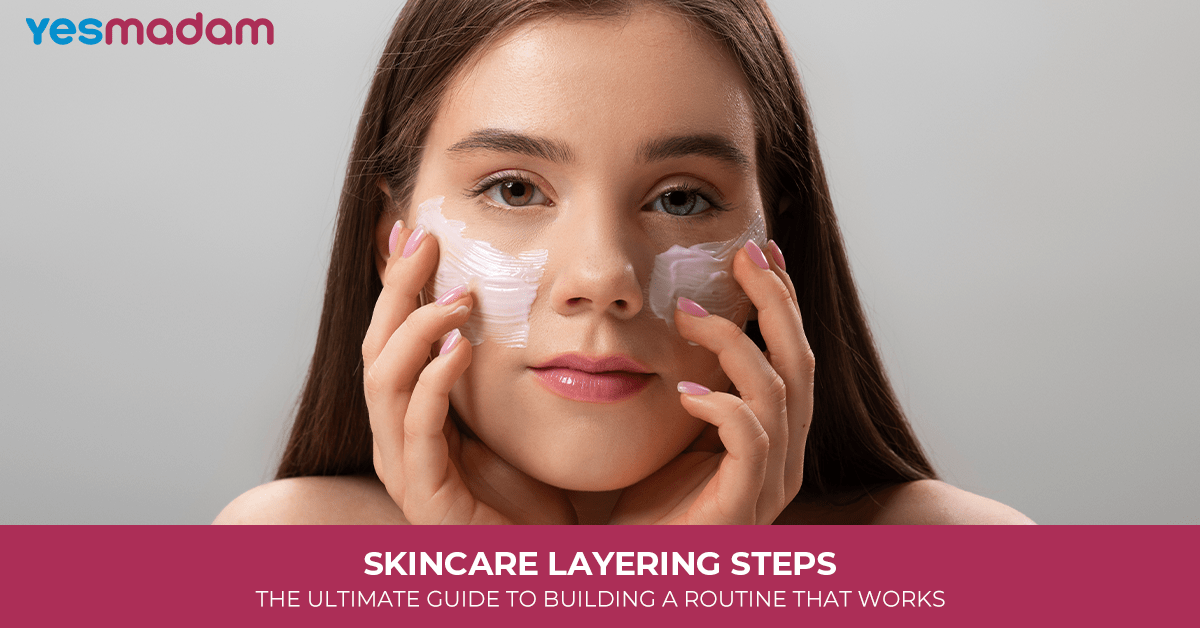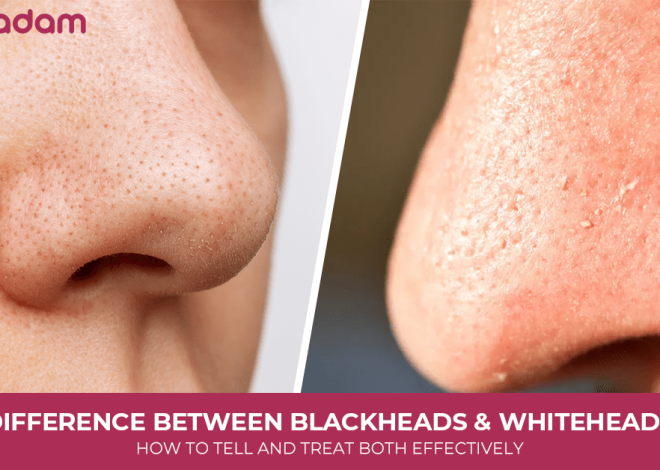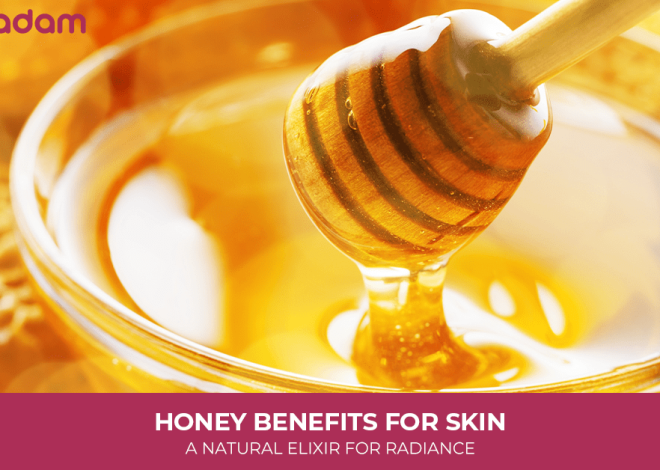
Skincare Layering Steps: The Ultimate Guide to Building a Routine That Works
If you’ve ever stood in front of your skincare shelf wondering, “What goes first—serum or moisturizer?”, you’re not alone. Understanding skincare layering steps is the key to making your products work effectively. The order in which you apply your skincare matters because it determines how well each product penetrates and delivers results.
In this guide, we’ll break down everything you need to know about layering, from cleansers and serums to moisturizers and sunscreens. Along the way, we’ll also touch on important concepts like active ingredients, hydration, and protection, so you can build a routine that’s both effective and enjoyable.
Table of Contents
Why Skincare Layering Steps Matter

When it comes to skincare, it’s not just what you use—it’s how you use it. Think of your skin like a sponge; it can only absorb so much, and if you put on thick products first, the lighter, more active ingredients won’t penetrate effectively. By applying your products in the right order, you ensure maximum benefits, better absorption, and reduced risk of irritation.
Layering also helps you customize your routine. For example, if you’re dealing with both dryness and acne, you can target both by layering hydrating serums with clarifying treatments. Done correctly, layering gives your skin the balance it craves.
The Golden Rule of Skincare Layering
Before diving into each product step, it’s worth remembering the golden rule of skincare layering: always move from thin to thick. Lightweight, water-based products should go on first, followed by richer, creamier, or oil-based products that seal everything in.
This approach prevents lighter products from being blocked by heavier ones and ensures that your active ingredients (like vitamin C or niacinamide) reach the deeper layers of your skin. It’s a simple yet powerful principle that makes layering foolproof.
Step-by-Step Skincare Layering Guide
Now let’s break down each step in detail. Think of this as your roadmap for building a routine that works for your skin type and lifestyle.
1. Cleanser
Every effective skincare routine begins with a cleanser. Cleansing removes dirt, sweat, oil, and makeup, allowing your skin to “breathe” and making it more receptive to the products that follow. Without this step, you risk trapping impurities under layers of skincare, which can lead to clogged pores and dullness.
If you wear heavy makeup or sunscreen, consider double cleansing: start with an oil-based cleanser to break down stubborn products, followed by a gentle foaming or gel cleanser to remove any residue. This ensures your skin is perfectly clean but not stripped of its natural oils.
2. Toner
After cleansing, your skin may feel slightly tight or unbalanced. That’s where toner comes in. Modern toners are no longer harsh, alcohol-heavy formulas—they’re hydrating, soothing, and designed to prep the skin for better absorption.
By applying toner, you’re not just balancing your skin’s pH; you’re also giving it an extra boost of hydration. Think of it as the “primer” of your skincare routine, helping everything else work more effectively.
3. Essence (Optional but Beneficial)
Essences are often overlooked, but they can be a game-changer. They are lightweight, watery formulas packed with nutrients and hydration. Their job is to condition the skin and make it more receptive to serums and moisturizers.
While not essential for everyone, essences are particularly useful for people with dry or dehydrated skin. They also add an indulgent step to your routine, making it feel more spa-like.
4. Serum
If your skincare routine has a “powerhouse,” it’s the serum. Serums are concentrated treatments that deliver targeted results—whether you’re tackling acne, hyperpigmentation, fine lines, or dullness.
Ingredients like hyaluronic acid (for hydration), vitamin C (for brightening), and niacinamide (for oil control and barrier repair) are common in serums. Always apply them before heavier creams so they can penetrate deeply into the skin.
5. Eye Cream
The skin under your eyes is thinner and more delicate than the rest of your face, which means it needs special care. Eye creams are formulated to hydrate, reduce puffiness, and minimize the appearance of dark circles.
When applying eye cream, use your ring finger to gently tap the product into the skin. This prevents unnecessary tugging and ensures better absorption. While not everyone needs an eye cream, it can be a helpful step if you struggle with tired-looking eyes.
6. Moisturizer
A moisturizer is your skin’s protective shield. It locks in hydration and strengthens your skin barrier, which is crucial for keeping irritants out and moisture in. Skipping moisturizer, even if you have oily skin, can backfire by making your skin produce more oil.
Choose a formula based on your skin type: lightweight gels for oily skin, creamy lotions for combination skin, and rich creams for dry or mature skin. The goal is to leave your skin plump, smooth, and well-nourished.
7. Sunscreen (Morning Routine)
No skincare routine is complete without sunscreen. This is the most important step in your morning routine because it protects your skin from UV damage, premature aging, and hyperpigmentation. Even if you’re indoors, UV rays can penetrate windows and harm your skin.
Look for a broad-spectrum sunscreen with at least SPF 30, and apply it generously as the final step in your routine. Reapply every 2–3 hours if you’re outdoors for extended periods. Skipping sunscreen can undo all the hard work of your other skincare products.
Common Mistakes to Avoid

Before you build your perfect routine, it’s important to know what not to do. Many skincare mistakes stem from over-complication or lack of patience. By avoiding these pitfalls, you’ll see results faster and with less irritation.
Skipping Sunscreen
No matter how many steps you follow, without sunscreen, your efforts are incomplete. UV rays cause damage that no serum can fully undo.
Mixing Too Many Actives
Combining strong ingredients like retinol with AHAs or BHAs can lead to irritation and sensitivity. It’s better to introduce actives slowly and alternate their usage.
Not Giving Time Between Layers
Layering products too quickly can cause pilling or prevent absorption. Waiting 30–60 seconds between layers makes your routine more effective.
Tailoring Skincare Layering Steps to Your Skin Type
Everyone’s skin is different, and the best routines are the ones tailored to your unique needs. By understanding your skin type, you can choose products and layering techniques that give you the best results.
- For Oily Skin: Stick to lightweight, oil-free formulas. Gel-based moisturizers and serums with niacinamide or salicylic acid work wonders without clogging pores.
- For Dry Skin: Layer multiple hydrating products—like hyaluronic acid serums, essences, and rich creams. Facial oils can also help lock in moisture.
- For Sensitive Skin: Opt for fragrance-free, gentle products. Avoid layering too many actives at once and focus on soothing ingredients like aloe vera or ceramides.
Conclusion
Mastering skincare layering steps isn’t about having the longest routine—it’s about creating a smart one that works for your skin. By following the thin-to-thick rule and understanding your skin type, you can get the most out of your products without feeling overwhelmed.
Consistency, patience, and protection are the keys. With the right layering, you’re not just caring for your skin, you’re investing in its long-term health and glow.
FAQs
1. Do I need to follow all the skincare layering steps every day?
Not at all. A simple routine of cleanser, moisturizer, and sunscreen is enough for daily care. You can add steps like serums or essences depending on your skin’s needs.
2. Can I use multiple serums in one routine?
Yes, but use them wisely. Apply the thinnest first, and avoid layering actives that might conflict (like vitamin C and retinol together).
3. Should I use toner if I already use essence?
Toner balances your skin, while essence hydrates and preps it for serums. If your essence is hydrating enough, you may skip toner, but some people enjoy the extra layer.
4. Can I layer retinol and vitamin C together?
It’s better to separate them. Use vitamin C in the morning for antioxidant protection and retinol at night for skin renewal. This avoids irritation and gets the best out of both.
5. How long should I wait between skincare layers?
Ideally, wait 30–60 seconds. This helps each product absorb properly and reduces the risk of pilling.
6. Is sunscreen really necessary indoors?
Yes, UV rays can still pass through windows. Daily sunscreen use protects against long-term damage, even if you stay indoors most of the day.
7. What’s the difference between serum and moisturizer?
Serums deliver concentrated active ingredients deep into the skin, while moisturizers lock in hydration and form a protective barrier. Both play unique roles in your routine.
8. Can oily skin skip moisturizer?
No, oily skin still needs hydration. Skipping moisturizer can lead to dehydration, causing your skin to overproduce oil. A lightweight gel moisturizer is ideal.
9. Should I use eye cream if my moisturizer already hydrates well?
Eye creams are specifically formulated for the delicate under-eye area. While not essential for everyone, they can help reduce puffiness and fine lines more effectively than regular moisturizer.
10. How do I know if my layering routine is working?
You’ll notice improved hydration, smoother texture, and a healthier glow. If you experience irritation or breakouts, simplify your routine and reintroduce products slowly.



